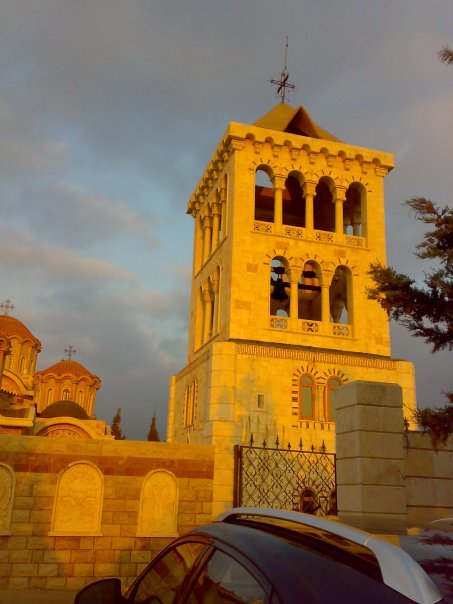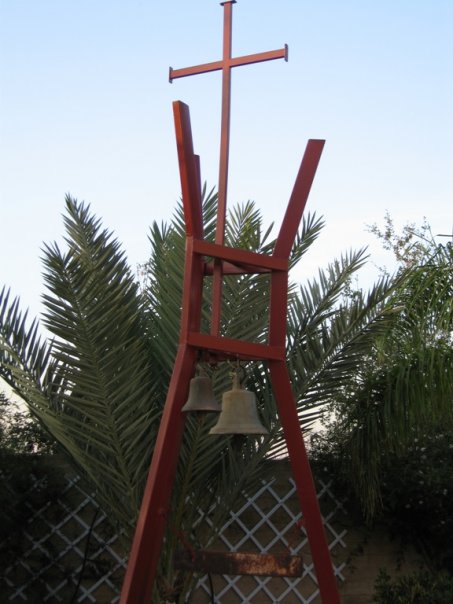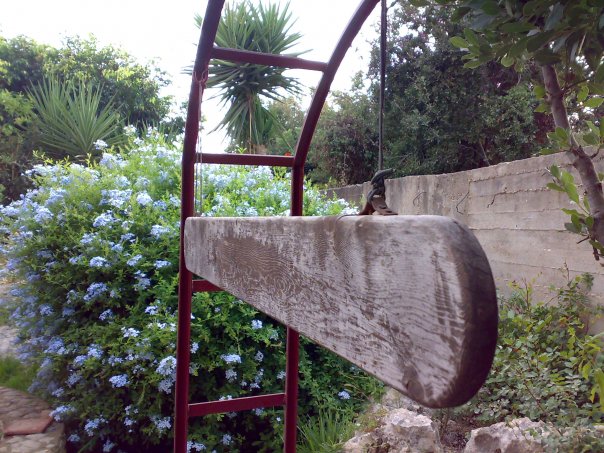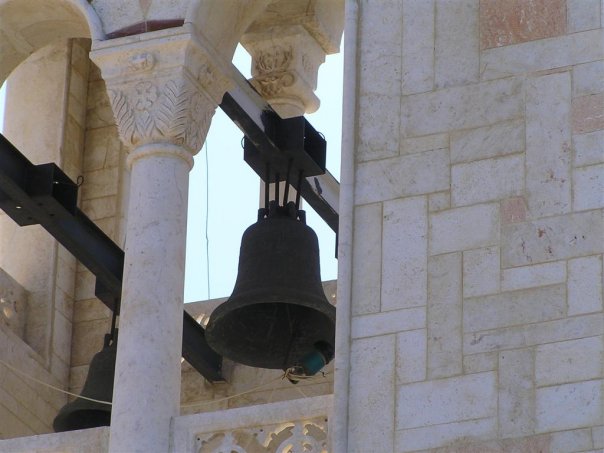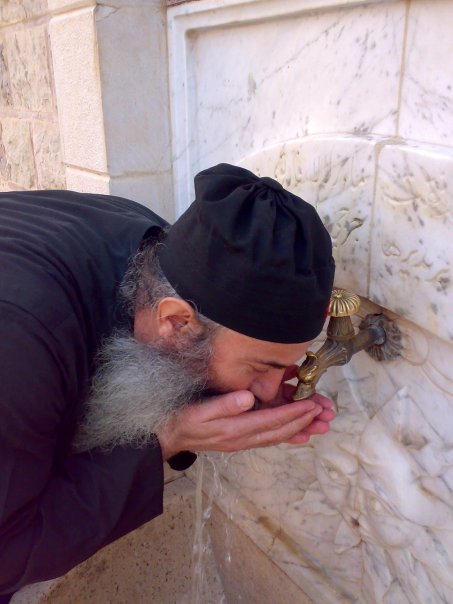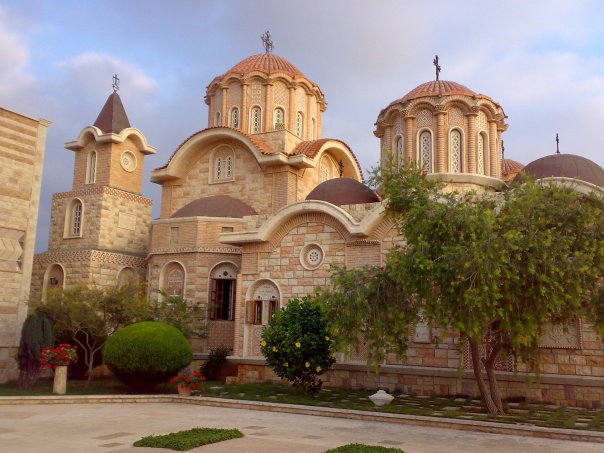Note: To save any image in its actual larger size, (right click) on it, then (Save Image As...) and save it in your desired space in your computer memory. You can also click on it and view it in its actual size.
Al Chafiaa Al Harra Monastery - Bdebba, el Koura (North Lebanon) Monastery Exterior Architecture | Our Lady of Fervent Intercession - Bdebba (Al Horsh) The monastery of Our Lady of Bdebba, al Koura-Lebanon, midway between Amyoun and Tripoli, is the most modern in the patriarchate of Antioch and one of the most recent in the Orthodox Church worldwide. It is also perhaps the most unusual monastery in Lebanon and Syria. Its impressive outline can be seen from afar when approached from the north and the north east, its red bricks cupolas rising above a hill on the al-Kura plateau. It lies at an altitude of 300 meters and a distance of 85 kilometers from Beirut. Most monasteries of the Middle East have existed for generations, following a tradition of monastic life going back to the time of St. Anthony and other famous desert hermits. Though many were abandoned, there has been a revival of monastic life since the late twentieth century. Monasteries empty and desolate thirty years ago are being brought back to life by a new generation of monks and nuns. For the people of Lebanon and Syria, the revival of these old centers of communal life is only natural. Father Kassianos gave himself the challenge of building the completely new monastery of Our Lady of Bdebba, Dayr al-Shafi’a al-Harra, “the warm and compassionate”, and of founding a new monastic order on the model of Mount Athos. The story of Bdebba is closely connected with the purpose of its founder, Father Kassianos. He took a degree in Pharmacy and then became a parish priest for eight years at Bdebba in al-Kura region of Lebanon. However, he continued to yearn for a closer relationship with God. He left his parish in 1990 and withdrew to the monastery of Stavronikita in Mount Athos. There, Father Kassianos had the opportunity to meet Father Paissios the Athonite, who recommended that he live the cenobitic life, where monks live together according to a rule. After meeting the metropolitan of Tripoli, Elias Qorban, in September 1992, Father Kassianos returned to Bdebba in November, determined to establish a new monastery in the region. His parishioners had already located an empty site covered with weeds and wild grass. Here, on the 13th of December, 1992, work began on the foundations of the new monastery. As soon as the oil was broken, the workers discovered an old church. An old local woman remembered that a ruined church had stood at that site at the beginning of the century. Many donors provided for the construction of the monastery. Exactly two years after the start of work, the monastic building was completed and the monks spent their first night in the monastery on December 13th, 1994. Construction on the monastery church began in 1998, and it was completed in 2000. The monastery now shelters two monks and the superior, Father Kassianos, its founder. The brotherhood lives in the manner prescribed by St. Arsenius of Cappadocia. They reside within the confines of the monastery, surrounded by the village community. They have a pastoral duty towards the village, and the superior, Father Kassianos, is the parish priest. However, the monks live separately from the village, following strict rules of seclusion inspired by the monastic life of Mount Athos. |
